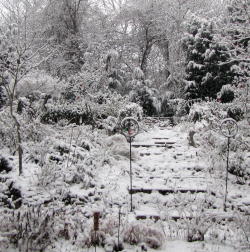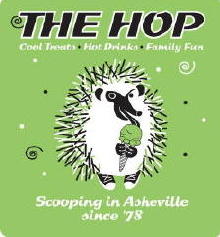
Old fashioned garden plants might conjure different images to different folks, depending upon one’s age. Old is a relative term. What comes to my mind is something that survives, thrives and spreads. Those passalongs that can be easily divided or seeds saved to be shared, plants that will still be standing when the homestead has crumbled back to compost are the true heirlooms. Anything short lived need not apply. Herbaceous peonies, Paeonia lactiflora, whether pronouned pennies, pay-OH-nies, pee-oh-knees, can be found growing in cow pastures out in the countryside, the only remnants of human activity. Roots dug and shared in the fall, planted with the eye more than an inch but less than three inches deep will flower faithfully for decades, given enough sunlight, often outliving the planter.

Plants with no cultivar names will usually spread by themselves, some by seed scattering mechanisms built in their grand design, some by running roots, some use both methods to ensure their longevity. The oriental poppy, Papaver orientale is a fine example of the last method. Once this plant has established itself, even if you try to dig it up, (why?) you will never get that last bit of root and in time it will reappear. Some people might find the color objectionable, those with sensitivity to orange hues. Do not count me among those. I believe in mixing all the colors together for a splendid miasma, the more, the brighter, the better.



Passalong Iris germanica sometimes come with a warning that these roots have world domination in mind. Let the planter beware, and keep a watchful eye on such things. If only I had listened when my dear departed neighbor Mae, from whence the peonies and poppies came, added some Vinca Major roots in with the iris in the bag. She told me that I would hate the groundcover quickly. She was so right, for now it is completely out of control under the tall pine trees at the eastern property line. But I had a lot of blank earth to cover and thought it could be dug out when no longer needed. Foolish gardener! But the iris remain beloved.

The Fairegarden property is in an older neighborhood in a small southern town. Most of the houses were built around the middle of the twentieth century and are modest in size. Many, including mine, were or still are rentals, with no garden plants to speak of. When we bought our home and began the garden, weeds and brush were cleared by heavy machinery, a backhoe brought in to dig the foundation for the addition. But before that was done, we scouted around the overgrowth for potential jewels. Tiger lilies, Lilium tigrinum, species daylilies Hemerocallis fulva and the surprising red hot poker, Kniphofia caulescens were among the buried treasures. They are common as dirt, but welcome garden denizens now.

Some bulbs showed themselves the following spring as the garden was being planned out. Muscari , possibly neglectum or armeniacum was in abundance, to our delight as well as the delight of other creatures.

This very early daffodil was discovered, among others, growing happily on the property. Diligent research led us to believe that it is Narcissus pseudonarcissus. This particular bulb emerges from the ground with the flower bud showing, blooming a full two weeks earlier than the other daffodils. Underground, the bulb reproduces at an astounding rate without choking itself out, there are plenty of blooms even from well established clumps. We have spread it all over the garden and given many away to friends and family. Recently an article about the early and prolific blooming of N. psuedonarcissus in the tribal lands of Oklahoma has ignited a spark that these daffs might be the same. (Click here to read it.) It was written that the belief is that these daffodils were carried with the Cherokees when they were forced from their land near the Appalachian mountains in Tennessee and elsewhere to designated Indian land in Oklahoma. This march was a horrendous injustice called the Trail Of Tears. We are near to that beautiful mountainous area, and these daffodils are everywhere, including on wooded land where there are no homes. Imagining that these could possibly be the same type of daffodil is thrilling. I was born and raised in Northeast Oklahoma.

In what used to be the front lawn, wild violets proved to be stronger than the gardener bent on defeating them. Seeding everywhere, with roots that break off at the slightest touch, we gave in to their prolific ways. They can stay, in some places anyway. People might wonder why violets, the most lovely of flowers could be described in such a derogatory manner. It is the seeding smack dab in the middle of other plants, choking them out that we find disagreeable. The violets are not good at sharing the space. But they are old fashioned and long lived and make a nice background for the yellow daffodils of spring.

This discussion could go on and on ad nauseum, so we will end with some passalongs that were brought from my previous garden, Nigella damascena and Lamb’s ear, Stachys byzantina. The Nigella is a prolific seeder, a biennial here with the little ferny babies showing up in late summer and overwintering to bloom the next spring. We make sure this cycle repeats itself by allowing the dried seed pods to remain until they open to reveal the black shiny seeds. They are cut down as time allows and tossed here, there and yonder, for that blue color reminds us of sea and sky and eyes. The Lamb’s ear was brought as a transplant, but also seeds from still standing flower stalks. Who doesn’t love the velvety silver leaves of this plant?
***
I love this topic and wish to thank my friend Joseph of Greensparrow Garden for inviting me to join in. Links to the other participants will be added as they become available below. We barely scratched the surface here, but there is a point that needs to be made. All of the heirlooms, those plants that are easy peasy, can be divided or seed true to the parent can be had for pennies, or even for free if you know a gardener who grows them. Anyone can have a beautiful garden full of gorgeous plants for little to no cost. All it takes is a vision, some land, and hard work. To a gardener, it is not considered work, but an enjoyable pastime for any age.
Fabulous But Forgotten by Joseph
What’s Old Is New Again (Maybe) Parma Violets by Matt
Everything Old Is New Again by Ryan
Frances












Frances, this is one of my favorite topics as well. I gladly would take passalongs from someone’s cherished garden…I like to look for old fashioned plants and plant them…and even when they become somewhat invasive it is hard to move them out…sometimes I even scatter the seeds…just incredible pictures…thx for brightening my cold snowy day!!
Beautiful photographs, Frances. I couldn’t imagine a garden without peonies, lilacs, daffodils and iris. There is something to be said for these faithful heirlooms. I have visions for a group of peonies in shades of rich cream, buttery yellow, and white. Ah, Frances, you have made me lust for spring! 🙂 I look forward to reading the posts from others who participate.
Old fashioned plants are great – I have red hot poker, loads of lupins, delphiniums, plus each year I put a couple of packets of annuals in – nigella area favourite – they just make the garden look so happy
For all the effort that goes into scouring the catalogs and nurseries for the new and different, your post makes me realize that most of my garden is made up of dear passalongs from gardening friends, some no longer living. These plants are most special of all, I think.
Seeing all of this color makes my heart go pitty patter. I keep telling myself it won’t be long now. Those tiger lilies are the most beautiful. I would love to get them going in my garden.
Nice selection of passalong plants Frances. I would like to grow Nigella damascena, but have never tried. Got seed?
This post tugs at my heart a little, reminding me of plants I had to leave behind when I moved across the country. Many of those were passalongs or plants my Danish grandmother had planted. Hopefully the current owner is appreciating and nurturing them. The few I was able to bring are still with me here and I’m having amazing luck at rooting prunings from the two roses just by sticking them in the dirt close by! I like to think it’s the spirit of the original owner of this property, who loved plants and birds, helping me out.
Our house and plant nursery building were the gardener’s cottage and carriage house for an estate. In late January 1984, after we moved in, the property was carpeted with thousands of common snowdrops, probably tens of thousands. We had so many that I assumed they were, in fact, common and didn’t truly appreciate them for many years. Now I think often about the estate gardener who lived in my house.
I have a number of beautiful passalong plants, and I have gotten rid of a few passalongs. One plant that was on our property when we arrived was a daffodil that Kathy Purdy identified as Van Sion. Another blogger said it was the ugliest daffodil in the world, but I love it.
Passalongs are the bones of my garden and always bring to mind the hand of the gardener who passed them to me.
Dear Frances, Your post makes me sigh! What lovely flowers and the memories attached to them are sweet~Mae always sounds so kind and generous~The perfect garden and neighbor! Interesting info on the Cherokee Indians and N. psuedonarcissus… Your muscari photo with the bee is delightful and it has jump started my brain–>DUH! I have the perfect spot for grape hyacinth to go nuts, I mean spread nicely! xxoogail
A lovely post to read and enjoy the photographs. Not quite in the passalong category, but about 20 years ago my sister enjoyed dried flower arranging and persuaded me to sow some teasels in the garden (they are bienniel) and even today they are still growing from seed even though I wage war on them each year. The seeds seem to be able to stay dormant for years.
Another of those posts that requires me to pull out my Gardening Notebook and write down plant names!
I’m going to regret the vinca? Too bad- it has been helpful. The variegated one is the one that is taking over- the regular one has kept itself in check for years. It seems so shallow rooted that I always assumed I could rip it out if it got into areas where I didn’t want it.
Old Fashioned means enduring to me. Love them!
I must say that Peony at the top is so lush, I love it! The daylily you pictured goes by a common name of Ditch Lily….not very nice for such a great plant. Love the combo of the Nigella and the Lamb’s Ear…soft and fluffy.
You post reminded me of my grandma, who used to call her peonies “pee-nies.” There is a simple elegance to the old-fashioned plants, and I like the idea of someone, far removed in time from me, looking at the same flower on which I gaze.
Frances,
I’m really glad you could participate with Joseph and me on this. Matt Mattus also has his post up and it’s fascinating. You both have taken quite a different approach to this theme than I did and I’ve learned a lot already. I can’t wait to see what Joseph posts and what your readers share.
Thank you for championing these “old-fashioned” plants, Frances! Such flowers bring back so many memories to me, and I think that is part of their charm. I think of my grandmother tending her flowers, which must have been a respite from all the hard work she had to do on the farm. When I see ditch lilies or irises growing in a field, I think, too, of the farmstead that must have been there at one time. It’s comforting to know that at least part of the garden can indeed be a legacy.
Good Morning Frances! I am looking out on a icy and cold landscape. Your extraordinary, stunning, stellar post is a tonic! It is just beautiful!! I was also very moved by your text . . . especially mentioning the Trail of Tears. I confess to having never thought of Native Americans taking along flowers from their homes. Your photographs are luscious and breathtaking. Brava!!
Frances,
Lovely as always! What a treat to see your thoughts and images on this topic!
A wonderful post Frances. I love it when I get seeds or plants from friends, or can pass them on in my turn. I love my garden plants to have stories to tell, and many of these tough and “common” or “easy” plants are also beautiful and well-adapted to the conditions. I would always prefer that to having to nurse some elaborately hybridised prima donna that lacks the wildlife appeal or robustness of its wilder cousins. Also a great reminder to find out what you already have when you inherit a new plot rather than ripping everything out “razed earth” style.
A wonderful topic. I love the so called Old Fashioned flowers. They are making a come back because gardeners know they are so reliable. I would love to do pass-a-longs if there were any gardeners near me. I think it would be such fun. I have enjoyed looking at your photos today and all of the beautiful blooms.I do not have the Red Hot Poker and may have to invest in one. They are so unusual and pretty. Well unusual maybe in my area. Have a wonderful week.
Pingback: Everything Old is New Again
So glad I read your post today. Just finished preparing a post where I found myself almost apologising for the fact that I was writing about what may be seen as an old fashioned plant. Really silly isnt it, I love all plants, perennial,annual,shrubs, trees, evergreens, I wake in the middle of the night with gardening on my mind. I am not a grower of vegetables, fed up apologising about that as well. Your passalongs are fantastic, keep showing them, as for Nigella (love in a mist) first packet of flower seeds we had ever bought way back in 1970.
I really enjoy all your plants, since they are some of my favorite as well. Peonies are for me the ultimate old-time plant that should be planted more. My grandma has some, but I hardly see them elsewhere. The bloom is gorgeous!
This grouping of posts is great! I’m a big fan of the “old standbys” as it were. Plants that have been around for so long have proven their value in versatility and durability. It doesn’t hurt that many of them still have more of their natural beauty and aren’t the outrageously oversized and complicated hybrids that are more in vogue these days.
Fun photos and inspiring post, Frances. You’ve included the rainbow, I think! Happy Winter to you… I’ll just stop over for my inspiration!
You had me feeling so old as I scrolled down through your pretty images of old fashioned plants. I have received every plant you have shown either from my mother-in-law or my 93 year old neighbor. Even red hot poker was offered but declined. But you are right in that these plants are easy to grow with little help from the gardener. That is what made them stand the test of time.
Just found your blog. Love it, especially your photographs. I’ll be back.
This is a great post, Frances. Thought provoking, inspirational. I love your tag line: Not work but an enjoyable pastime, not just for any age but for the ages! Especially when you are gardening with plants that live and proliferate for almost ever.
Must get me some of that nigella right away.
Thanks for the thoughts. . .
Frances, your beautiful photographs should be on the cover of a magazine – especially the peony and the papaver. This posting is informative. Ididn’t know muscari is considered an old-fashioned plant.
Rosie
Frances, what a fantastic post. I recognized peonies, daylilies and violets as plants we have discovered at our new home. My mother has always tended to garden with such plants as she doesn’t believe in going to nurseries and paying for plants. thinks it’s a waste of money! although she has no problem accepting plants as gifts. so I guess it’s okay to waste someone else’s money 😉
I wish that I had some found gems in my garden, but we live in a new subdivision that used to be a cotton field. The only flower of any kind that has grown by itself is a trumpet vine that grows in a tree on the back treeline. You’re lucky. 🙂
I would love to live in a land where peonies grew wild on old farmsteads. There are crinums, daffodils, a plenty — but alas, not the same as peonies…
So many lovelies … sigh …